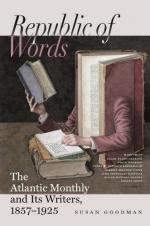Our task is done. We think we have established our case. By anagram, Elizabeth Nagle makes a perfect Angel; by heraldry and a pontifical pun, the N’Angles of the County of Meath are Angels in indefeasible succession; Elizabeth belonged to the Red branch of her family, and therefore must have resembled the royal Elizabeth; she was brought up among the “crew of Saints” in the St. Leger family; and, finally, her place of residence corresponds with that depicted by the “passionate shepherd” as the home of his second mistress. We think we have satisfied all the requirements of reasonable conviction, and confidently await the verdict of that select few who may feel interest in this purely literary investigation.
Guided by the rules of anagram here laid down and illustrated, some future commentator, more deeply versed in the history and scandal of the Elizabethan era, may be able to identify real personages with all the fantastic characters introduced in the “Faery Queen.”
[Footnote 1: See Colin Clout’s come
home again.] [Footnote 2: Vide Scott’s
Life.] [Footnote 3: Upton’s Faery
Queen, Vol. I. xiv.] [Footnote 4: See
Wood’s Athenae Oxonienses.] [Footnote
5: See Hunter’s New illustrations of
Shakspeare,
Vol. II. p. 280.]
[Footnote 6: Book II. Canto vi. etc.—See
Black’s Life
of Tasso, Vol.
II. p. 150.]
[Footnote 7: Upton, Vol. I. p. 14.—Faery
Queen, Book
VI. Canto vi. st.
10, 17.]
[Footnote 8: Vide that to Queen Anne.]
[Footnote 9: Cornwallis’s Essays,
p. 99.] [Footnote 10: Camden’s Remains,
folio, 1614, p.164.] [Footnote 11: Iliad,
Z. 265.] [Footnote 12: Faery Queen, Book
VI. Canto x.] [Footnote 13: Sonnet lxix.]
[Footnote 14: Sonnets lxxiii, lxxv, and lxxxii.]
[Footnote 15: Sonnet i.] [Footnote 16: Sonnet
viii.] [Footnote 17: Sonnet xvii.] [Footnote
18: Sonnet lxi.] [Footnote 19: Sonnet lxxix.]
[Footnote 20: Sonnet lxxxiii.] [Footnote 21:
Stanza 9.] [Footnote 22: Stanza 13.] [Footnote
23: Verstigan’s Restitution of Decayed
Intelligence,
p. 226.]
MISS WIMPLE’S HOOP.
[Concluded.]




